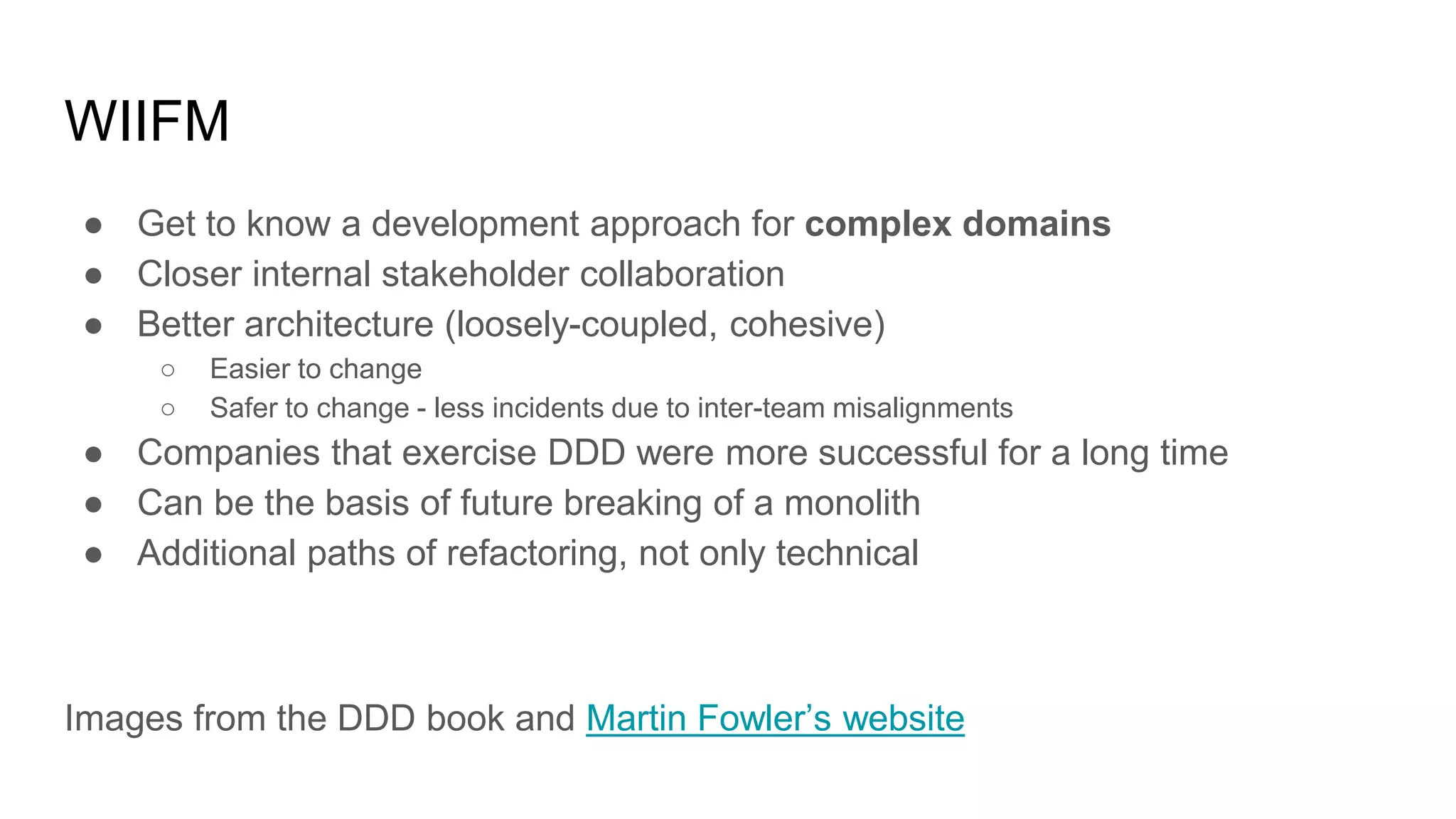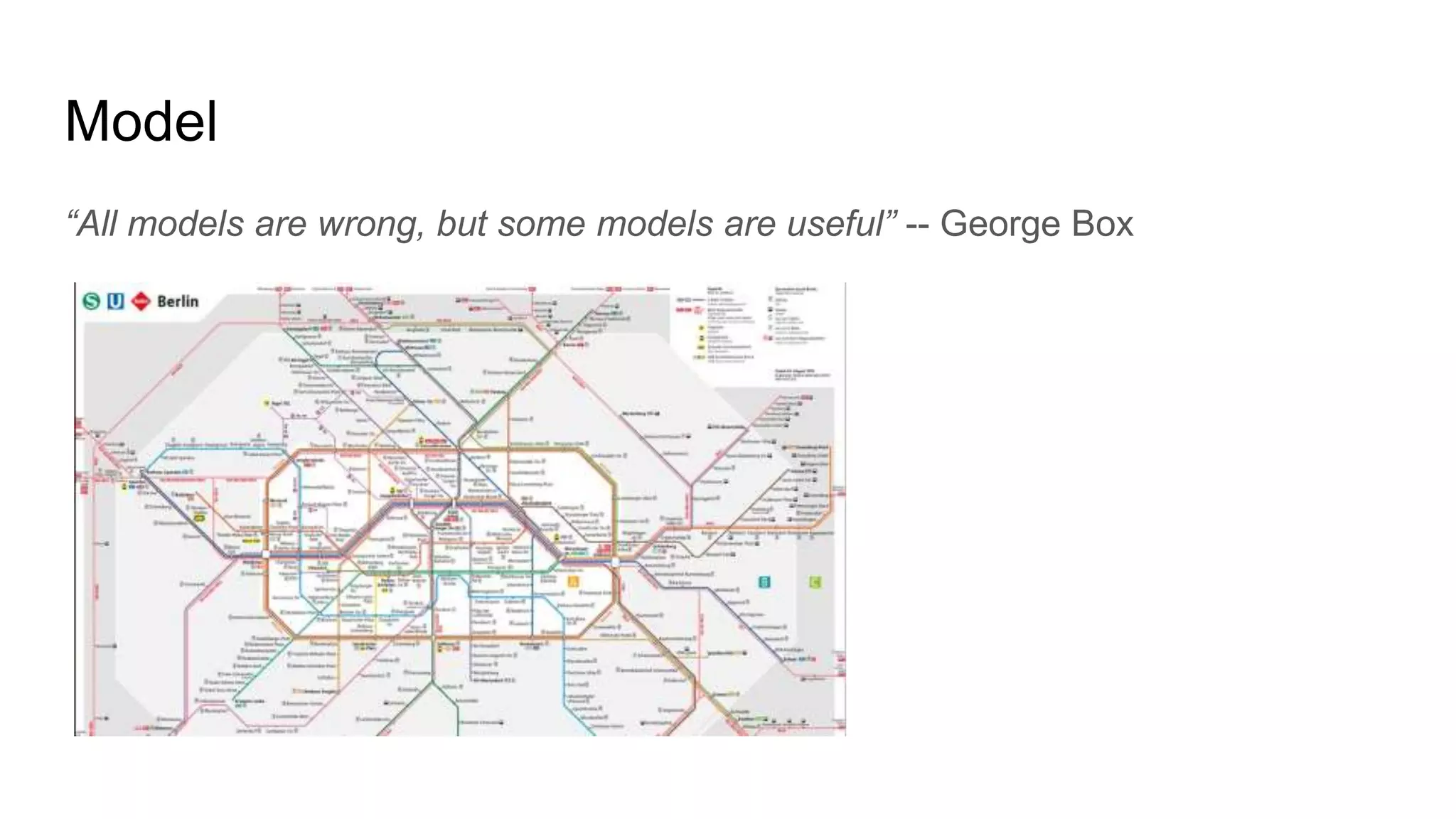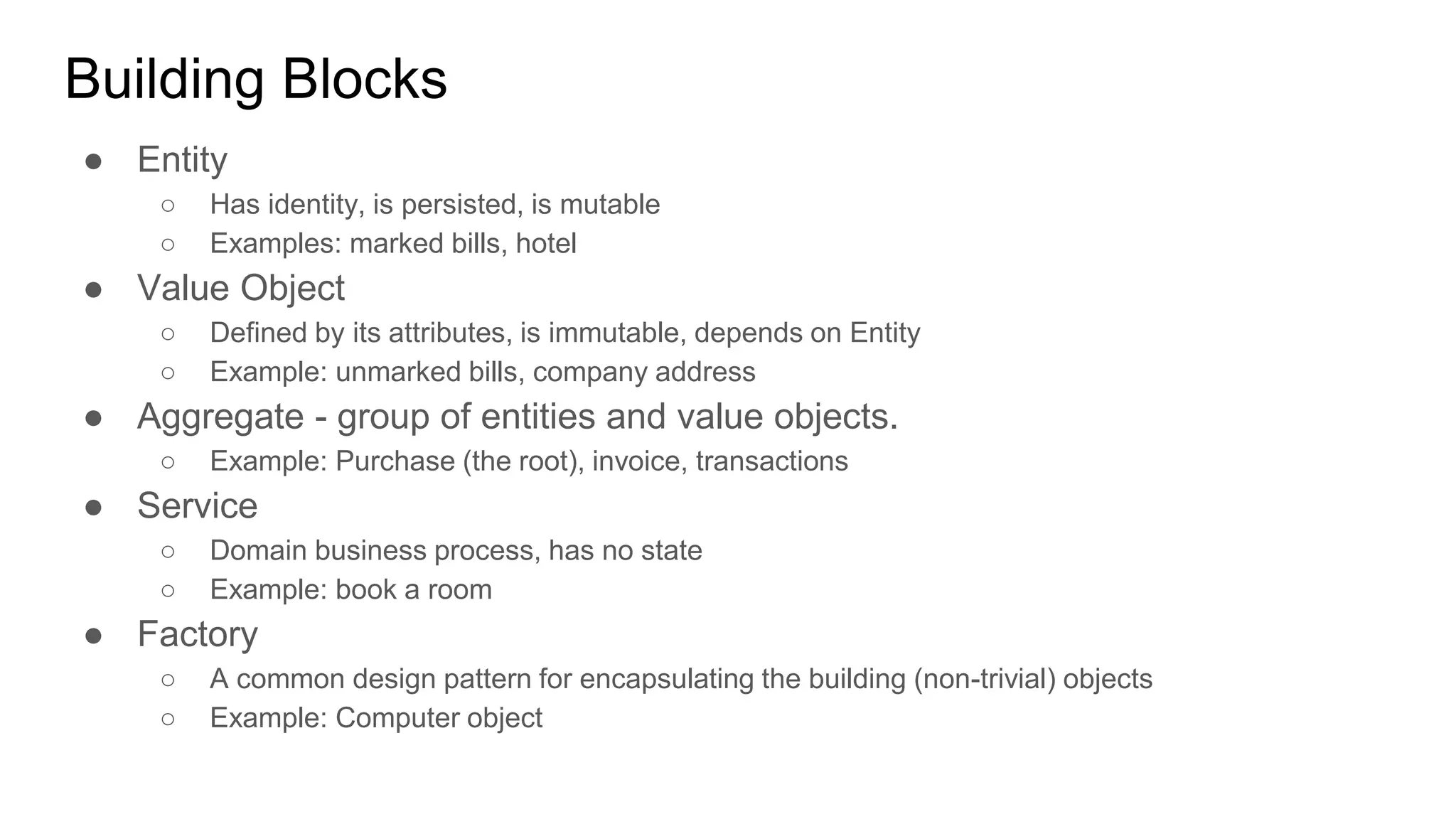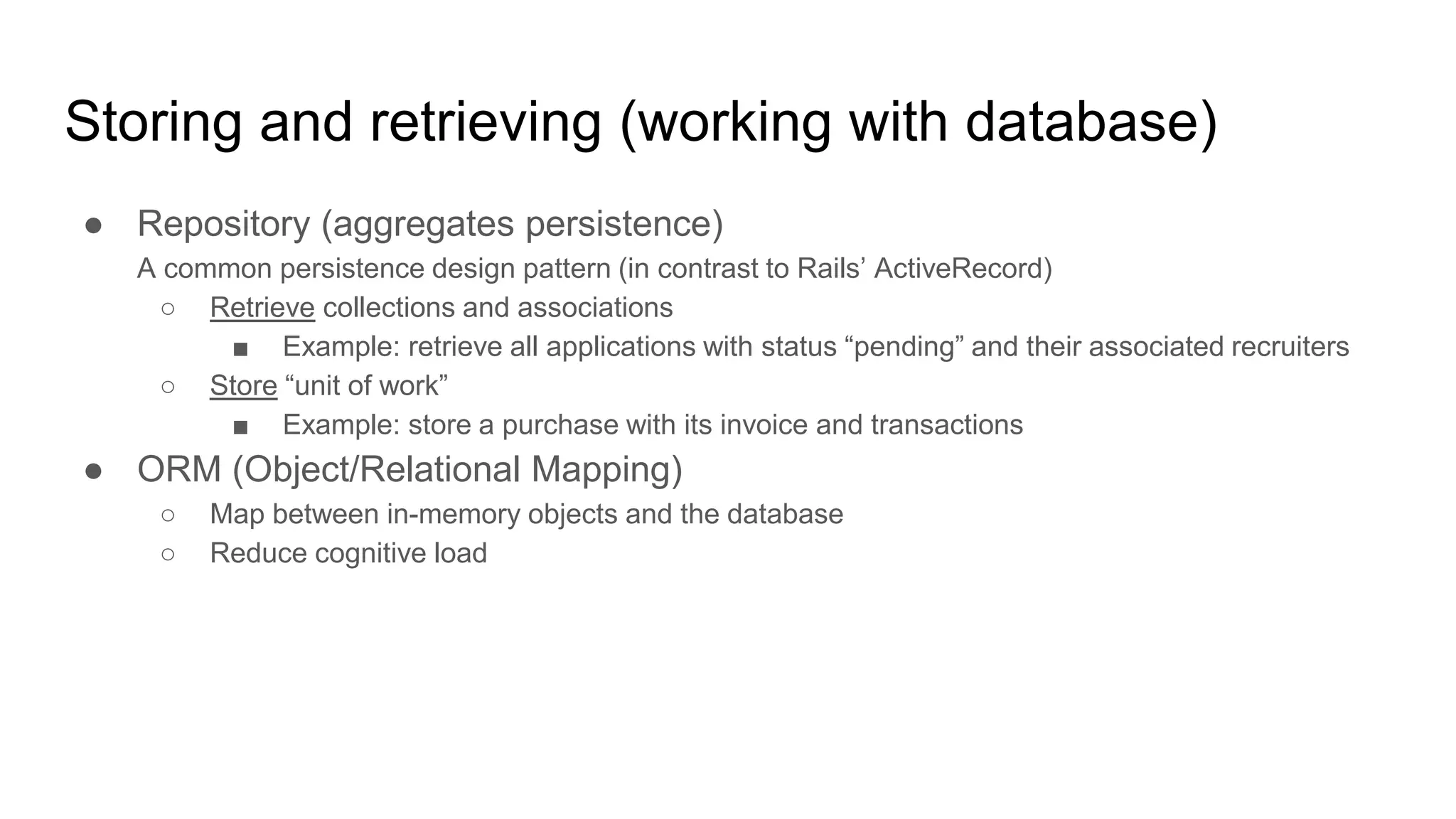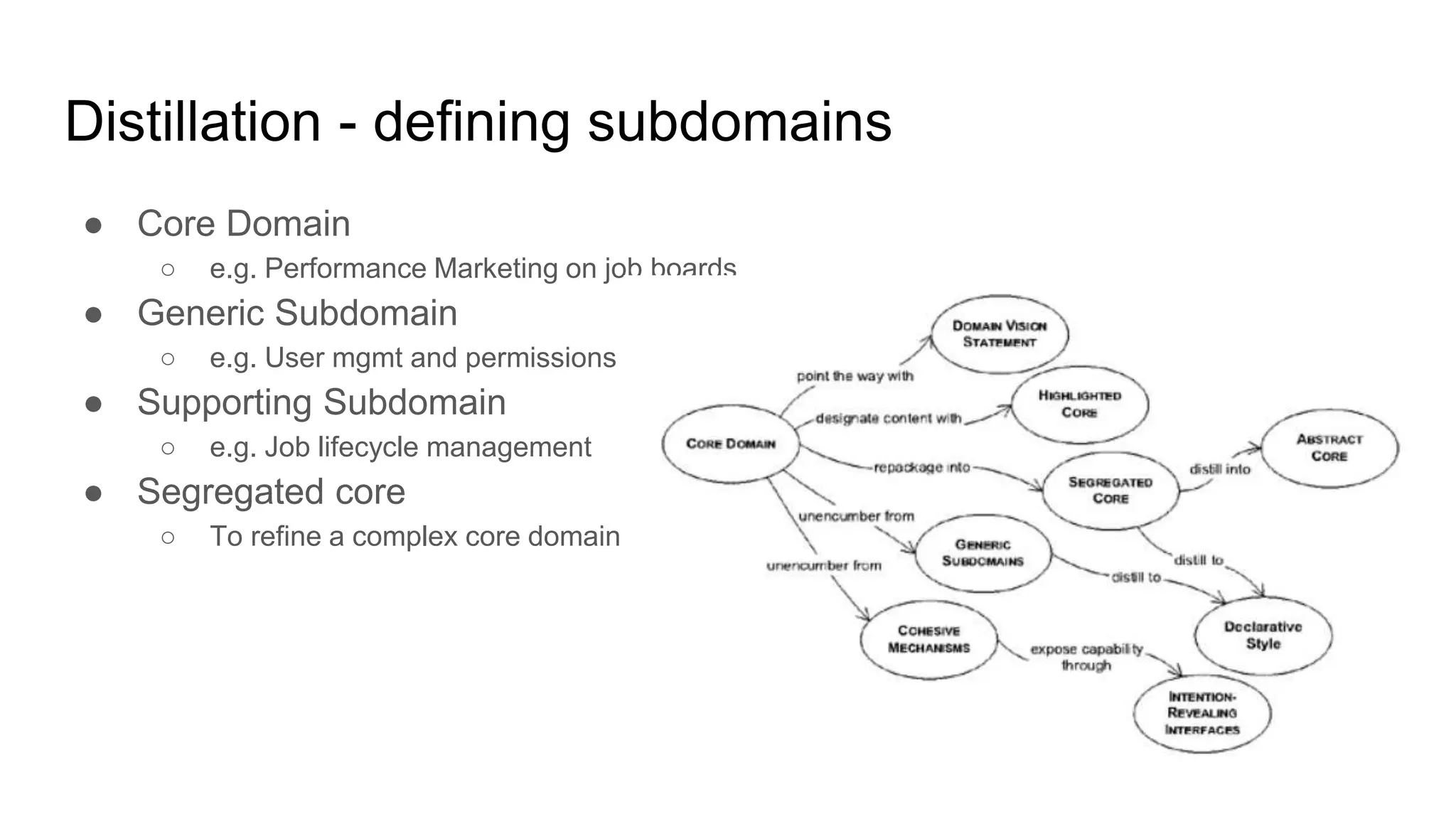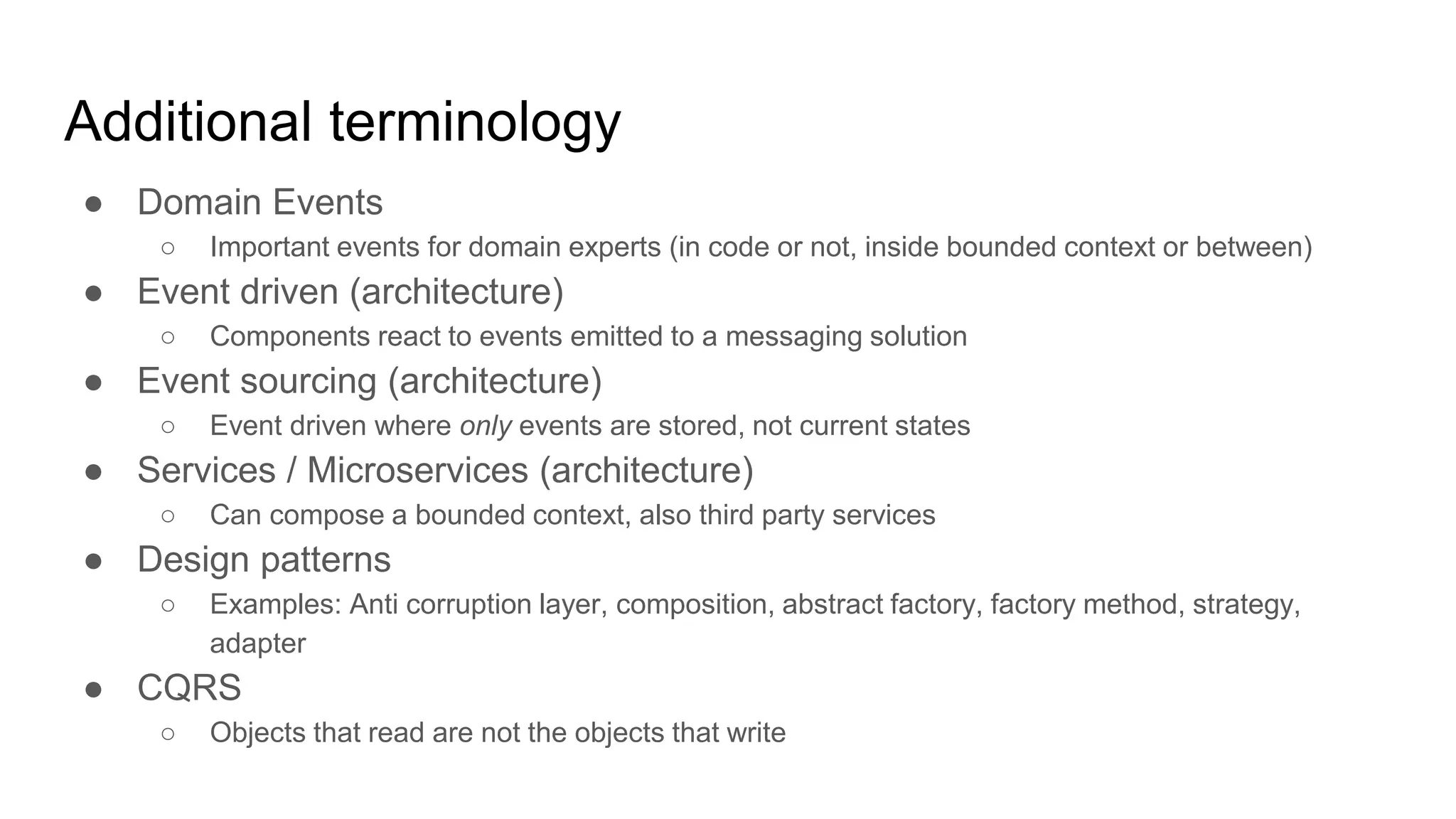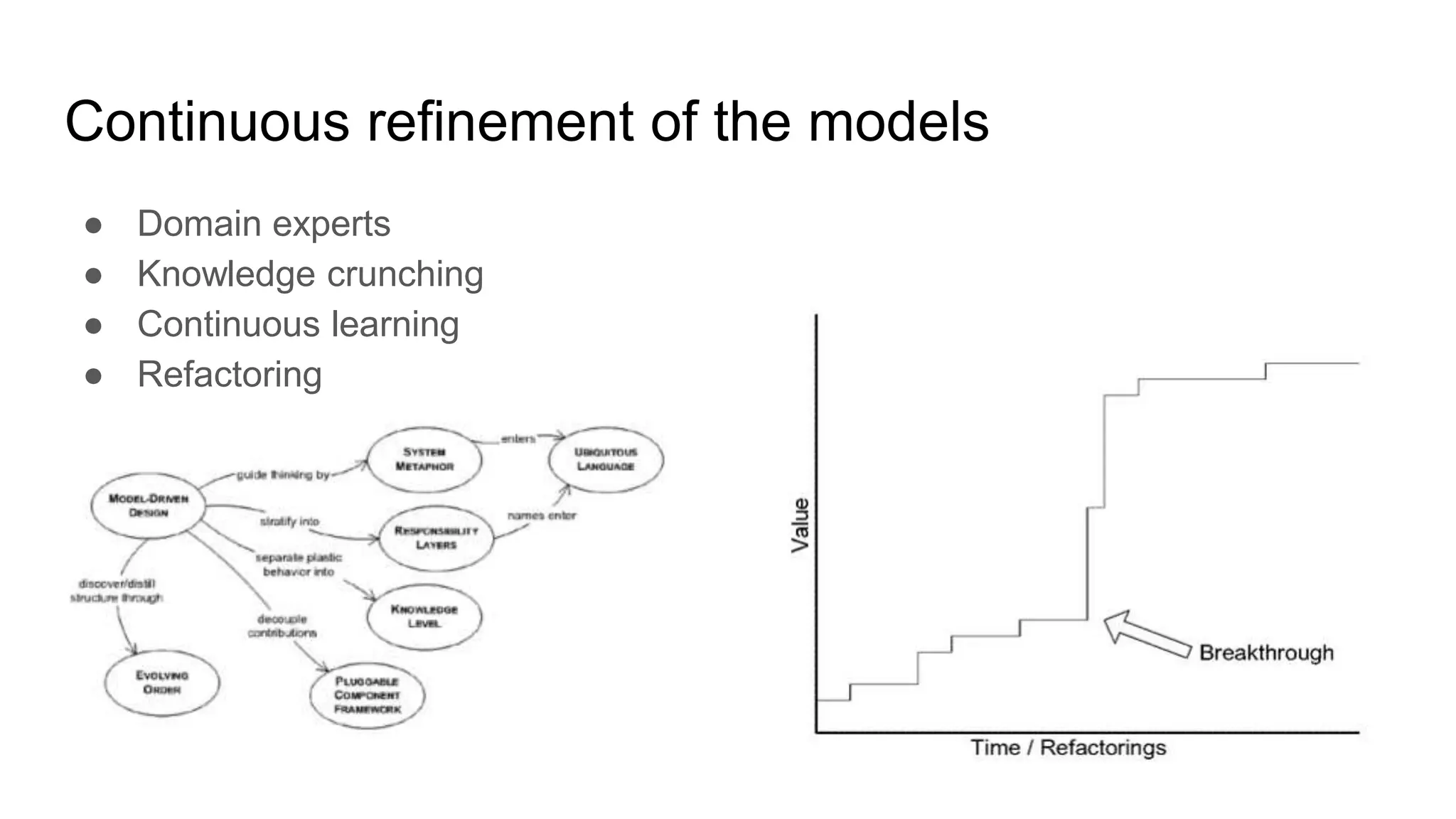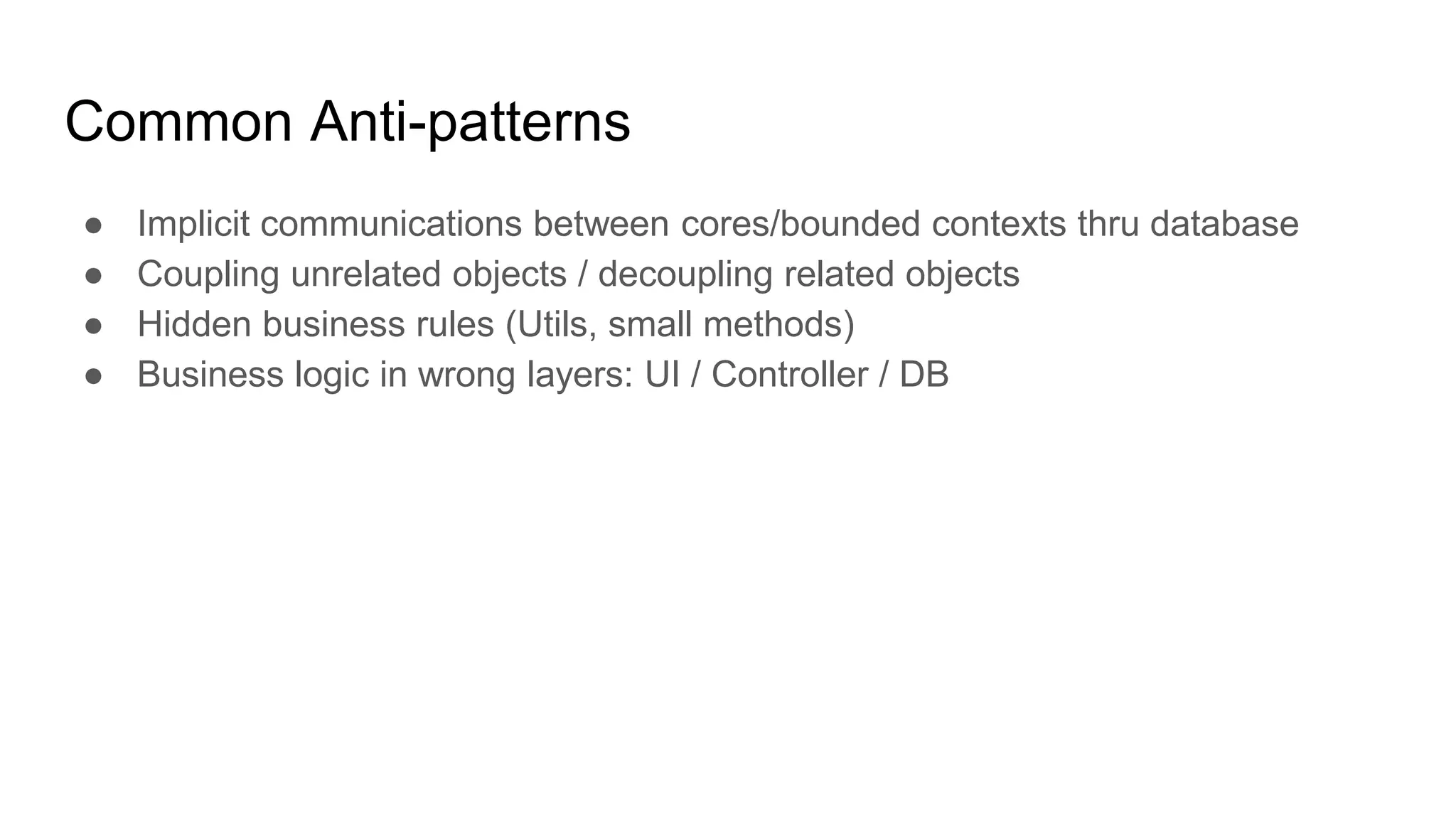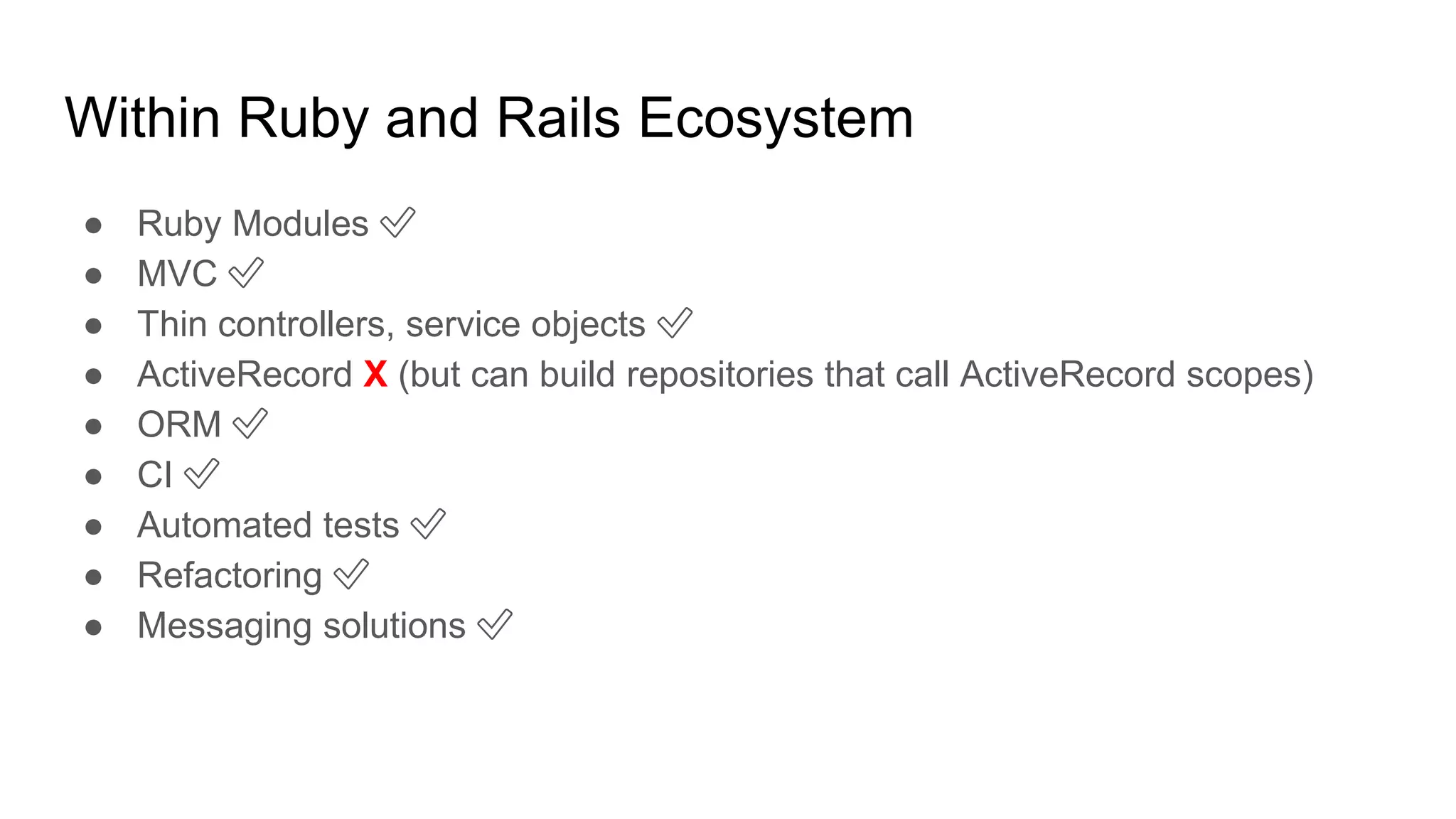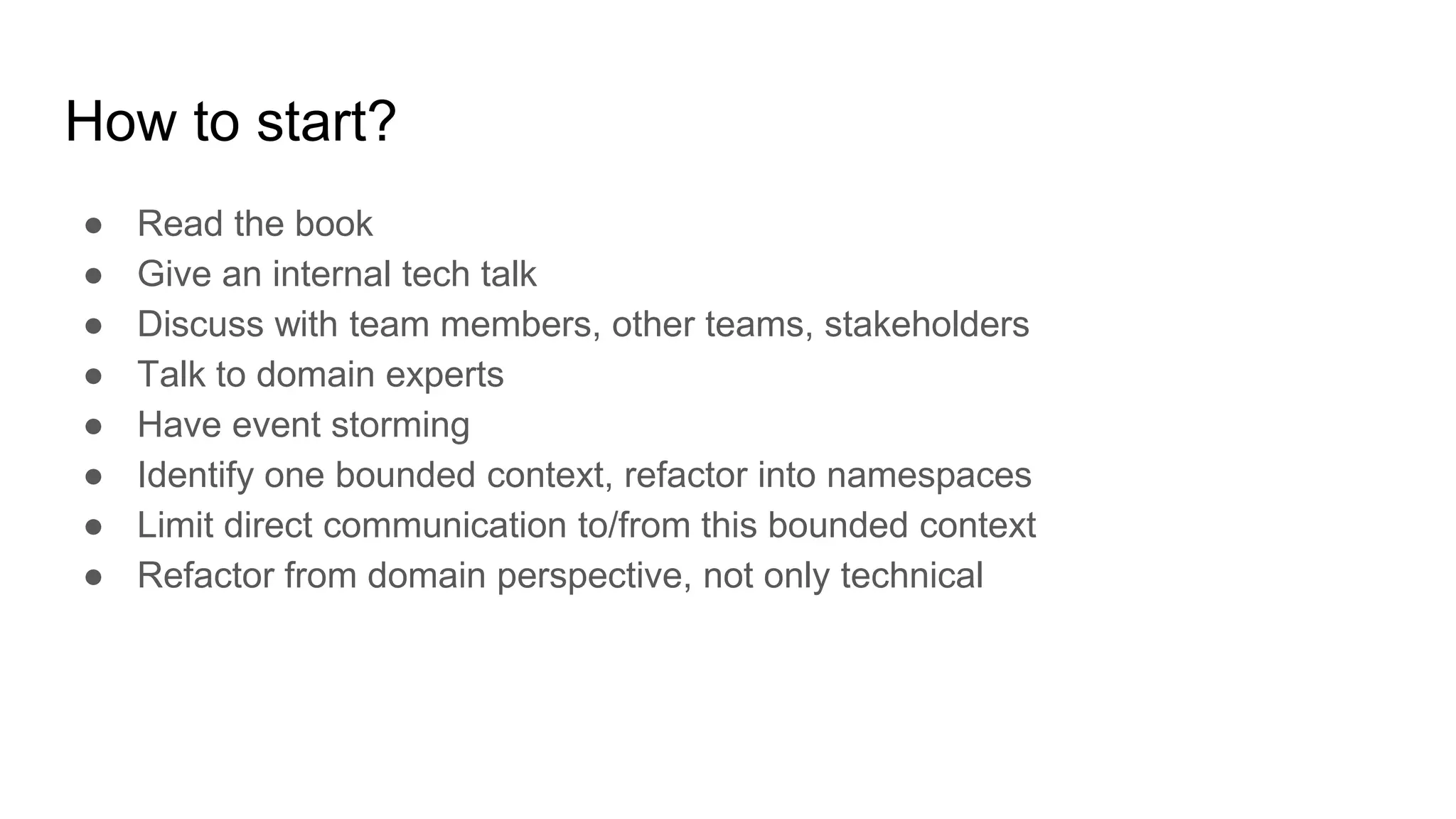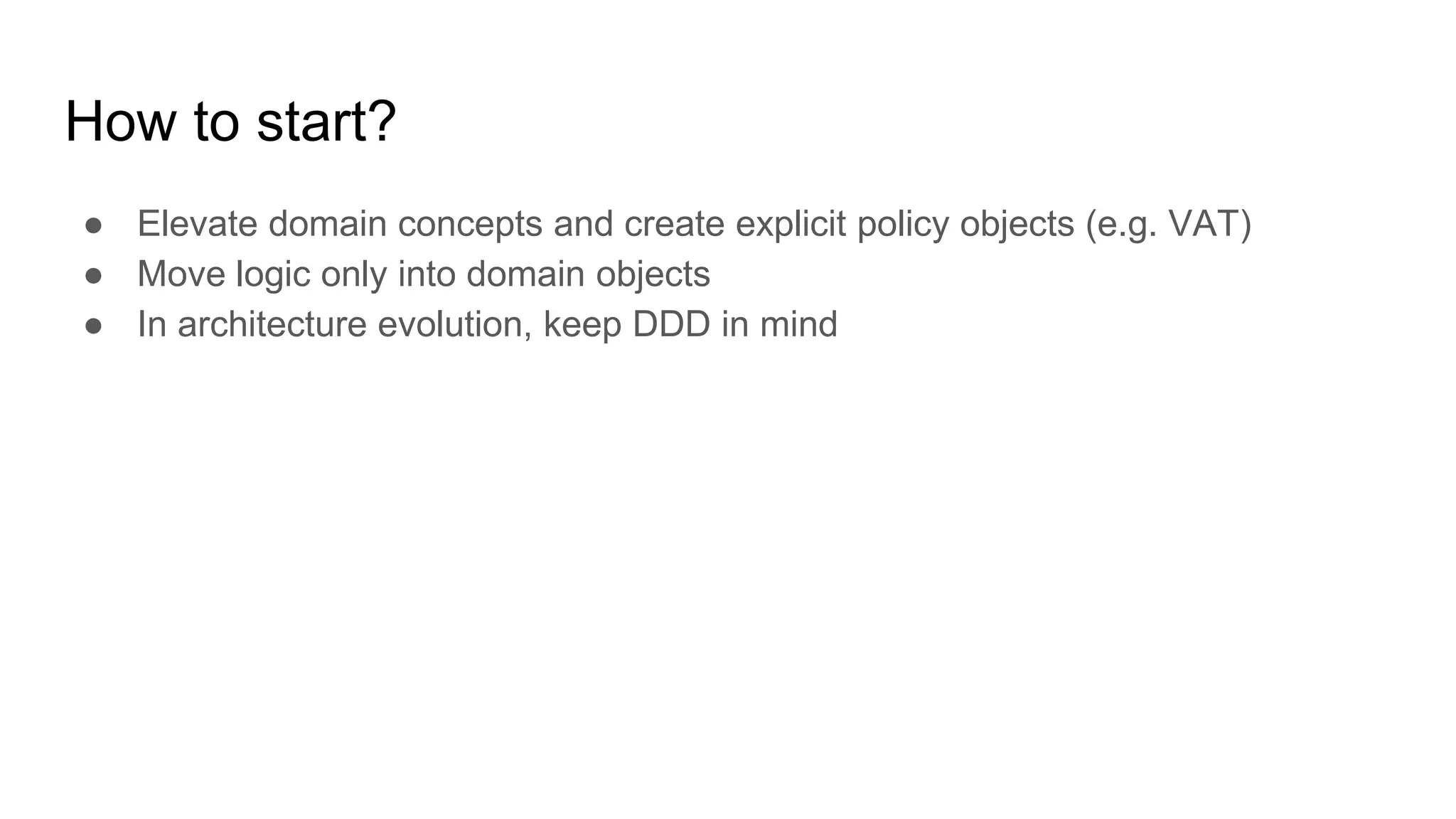Domain Driven Design (DDD) is an approach to software development that centers the design around the core domain or business logic. It advocates for close collaboration between technical and domain experts to build a ubiquitous language within bounded contexts. The key aspects of DDD include isolating domain models and business rules within entities, value objects, aggregates, and services layered according to business needs rather than technical constraints. Continuous refinement of models through collaboration ensures the design effectively captures the domain as business needs evolve. DDD provides principles for breaking large monoliths into loosely coupled services and microservices to support flexible design and development.

